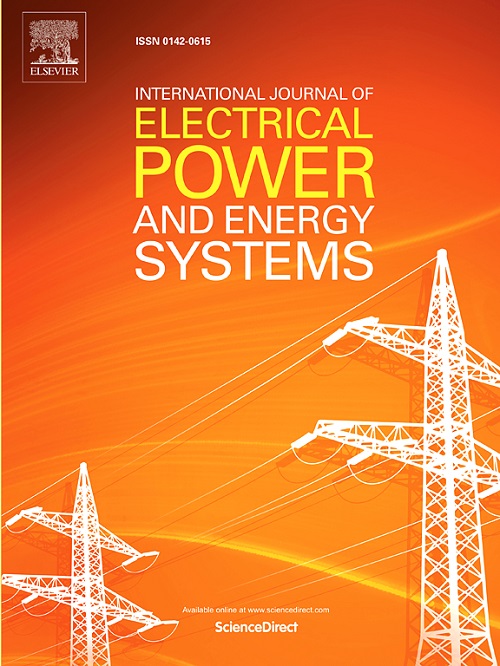Analyzing the effect of corona losses on dynamic line rating models for overhead transmission lines
IF 5
2区 工程技术
Q1 ENGINEERING, ELECTRICAL & ELECTRONIC
International Journal of Electrical Power & Energy Systems
Pub Date : 2025-02-20
DOI:10.1016/j.ijepes.2025.110546
引用次数: 0
Abstract
High-voltage transmission lines tend to generate corona activity. The value of corona losses is highly dependent on several parameters such as line configuration, conductor geometry, surface condition, operating voltage and weather conditions. International guidelines and standards such as Cigré, IEEE and IEC recommend that corona losses should not be considered when developing thermal conductor models, so such losses are typically omitted when developing dynamic line rating (DLR) applications. DLR is a set of techniques based on dynamically changing the thermal ratings of transmission lines based on changes in environmental conditions (wind, temperature, etc.). To develop accurate DLR models that include corona losses, a large amount of line data is required, including operating voltage, complete conductor information (materials, dimensions, etc.), bundle and line geometry, phase layout, and ground clearance, among others. To validate the accuracy of such models, part of the complete line data, long-term measurements of instantaneous corona losses in existing lines, operating voltage and weather conditions are required. However, the development of DLR approaches and the inclusion of corona losses in such models is severely limited by the lack of experimental work that includes a complete description of all this information. Based on experimental corona losses already published in the literature, this paper uses an accurate conductor model that accounts for radial heat transfer to show that, under certain conditions, corona losses are comparable to and even greater than Joule losses, which are usually the main source of conductor heating, suggesting that corona losses should be included in the development of accurate thermal conductor models. It has also been shown that for conductors in a normal condition, operating in fair weather conditions and at rated line load, corona losses are typically less than 2% of the Joule losses, resulting in a reduction of the maximum current carrying capacity of less than 1%. However, for heavily contaminated conductors, the reduction in current carrying capacity due to the effect of corona losses can be as high as 15%.
求助全文
约1分钟内获得全文
求助全文
来源期刊
CiteScore
12.10
自引率
17.30%
发文量
1022
审稿时长
51 days
期刊介绍:
The journal covers theoretical developments in electrical power and energy systems and their applications. The coverage embraces: generation and network planning; reliability; long and short term operation; expert systems; neural networks; object oriented systems; system control centres; database and information systems; stock and parameter estimation; system security and adequacy; network theory, modelling and computation; small and large system dynamics; dynamic model identification; on-line control including load and switching control; protection; distribution systems; energy economics; impact of non-conventional systems; and man-machine interfaces.
As well as original research papers, the journal publishes short contributions, book reviews and conference reports. All papers are peer-reviewed by at least two referees.

 求助内容:
求助内容: 应助结果提醒方式:
应助结果提醒方式:


